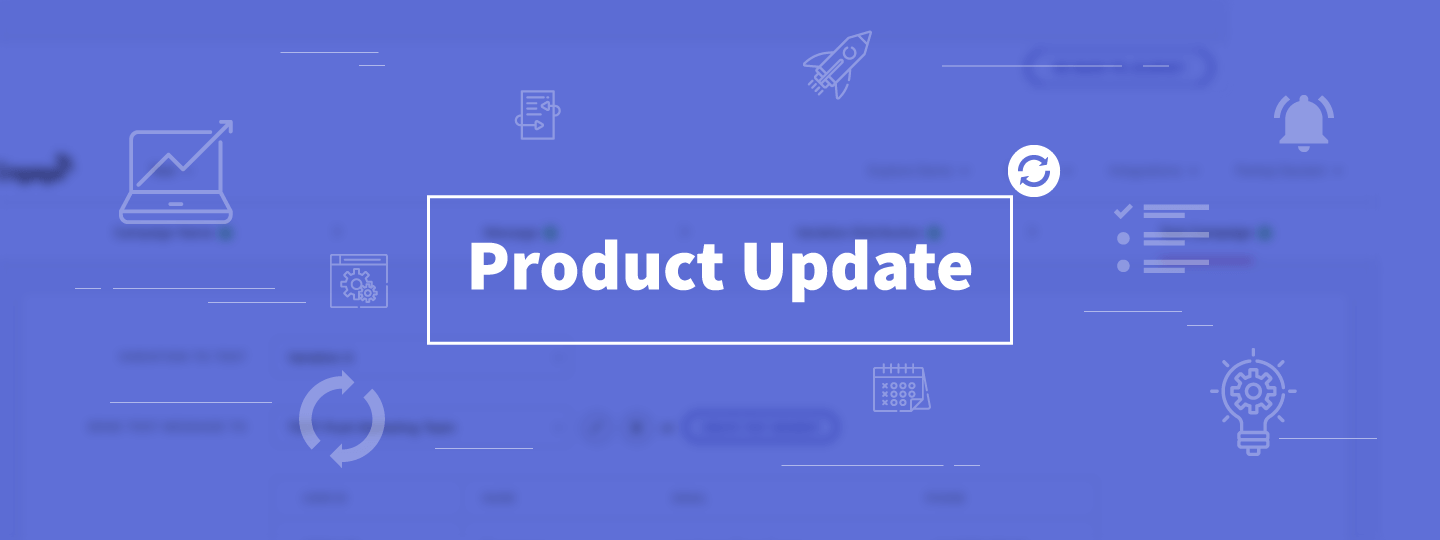Imagine you’re running a food delivery app and want to show users a list of newly opened restaurants in their vicinity serving their favorite cuisine.
Earlier, WebEngage’s recommendation strategies were limited to a single dimension—Top Events, Relevant Events, or Personalized based on user behavior. But what if you wanted more control?
With Collections, you can now apply filters and logic on catalog columns to generate targeted, multi-item recommendations — like all restaurants serving the user’s favourite cuisine with a price for 2 under Rs.2000, sorted by rating. This flexibility goes beyond one-size-fits-all, helping you tailor results to your exact use case.
The Solution: Enter Collections
Collections allow you to filter dynamically and sort catalog data using custom logic, giving you complete control over what recommendations are shown and why.
You can now:
- Retrieve multiple catalog records dynamically
- Apply filtering criteria using user attributes, event data, or campaign variables
- Sort recommendations by relevance (e.g., rating, price, discount)
- Use up to 3 levels of nested AND/OR conditions for advanced use cases
And the best part? No code required.
Getting Started: Building a Collections Strategy
1. Navigate to Recommendations
From the left-hand panel, open the Recommendations module. On the revamped page, you’ll see strategies like:
- Top Items
- Relevant Items
- Personalized
- Collections
Click on Collections and then Create to begin.
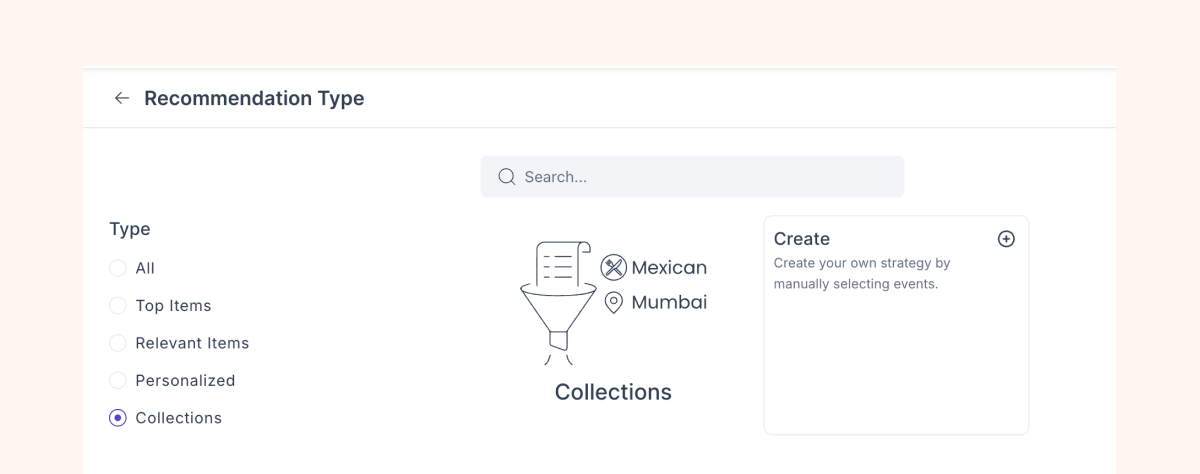
2. Choose a Catalog
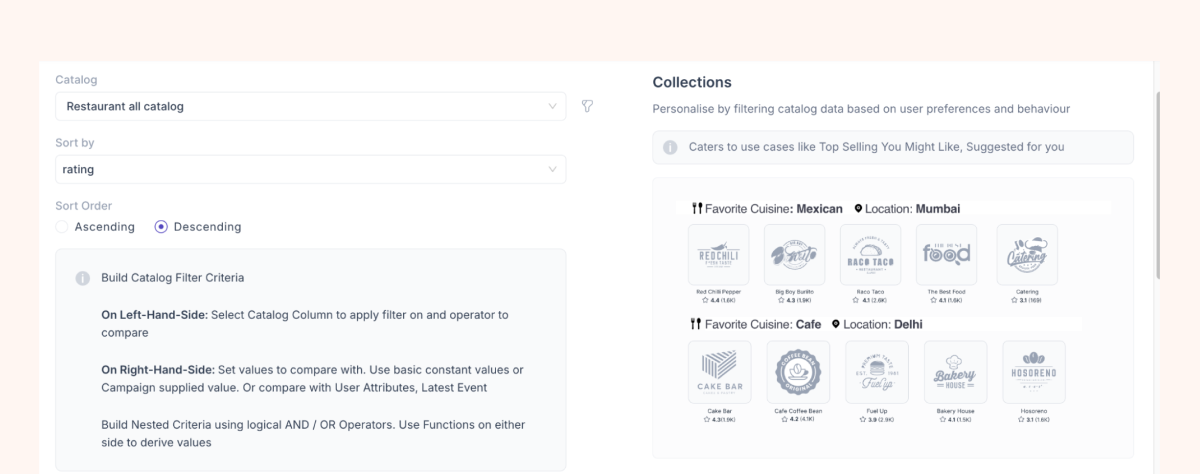
Select the catalog dataset that will serve as the source of your recommendations—restaurants, courses, products, or hotels.
3. Define Sorting Logic
Set how the output should be ordered:
- Sort by Rating (Descending)
- Or by Price (Ascending)
- Or even by a custom attribute like Trending Score
4. Apply Filters Using Nested Logic
This is where Collections shines. Here is how you can build your nested logic with AND/OR conditions:
- Left Side (Catalog Column Selection)
- Middle Section (Comparison Operators)
- Right Side (Comparison Values)
- Last Event Attributes (e.g., user’s last searched cuisine)
- User Attributes (e.g., user’s city, past orders)
- Other Catalog Columns (compare against another catalog field)
- Constants (static, manually entered values like “Indian” cuisine)
- Campaign-Supplied Dynamic Values (real-time inputs from ongoing campaigns)
Select a catalog column from the dropdown (e.g., Cuisine, Rating, City). This determines which field the filter will apply to.
Choose how to compare values: equals, not equals, greater than, less than, between, contains, etc.
Define what the selected catalog column should be compared against:
Click the “+” button to add more conditions.
Note: The system supports up to 3 levels of AND/OR nesting, allowing for precise & complex filtering logic.
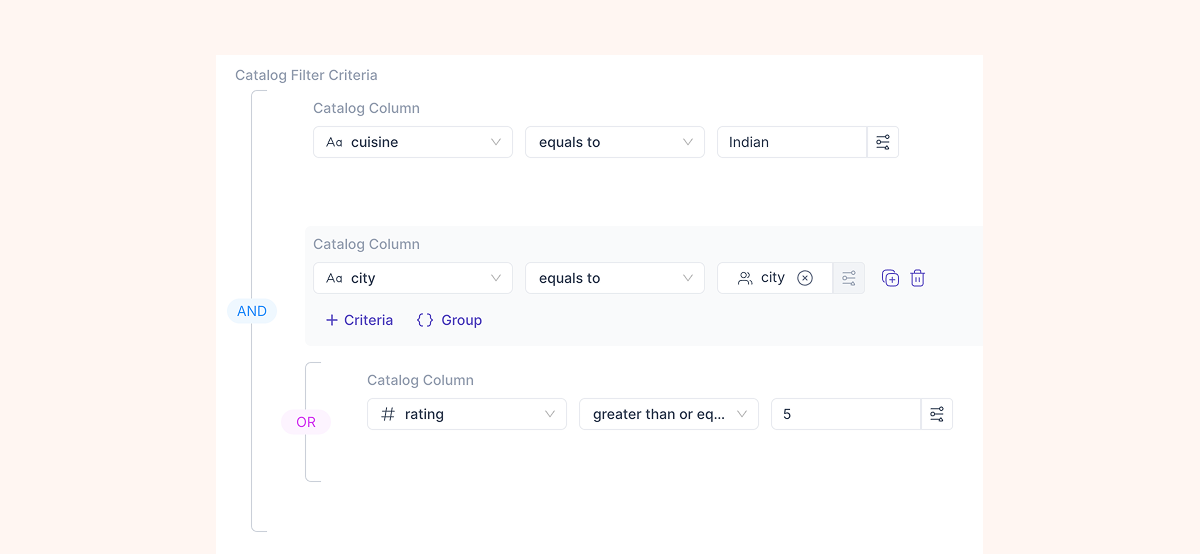
Preview It All—Before You Go Live
The Preview Interface in Recommendations helps validate everything in real time:
- Switch between Card View and Table View
- Use Card View to simulate how tiles would appear in a real-world layout—perfect for UI-rich channels like web or app.
- Switch to Table View for a quick, structured view of all underlying catalog data—ideal for internal reviews or debugging.
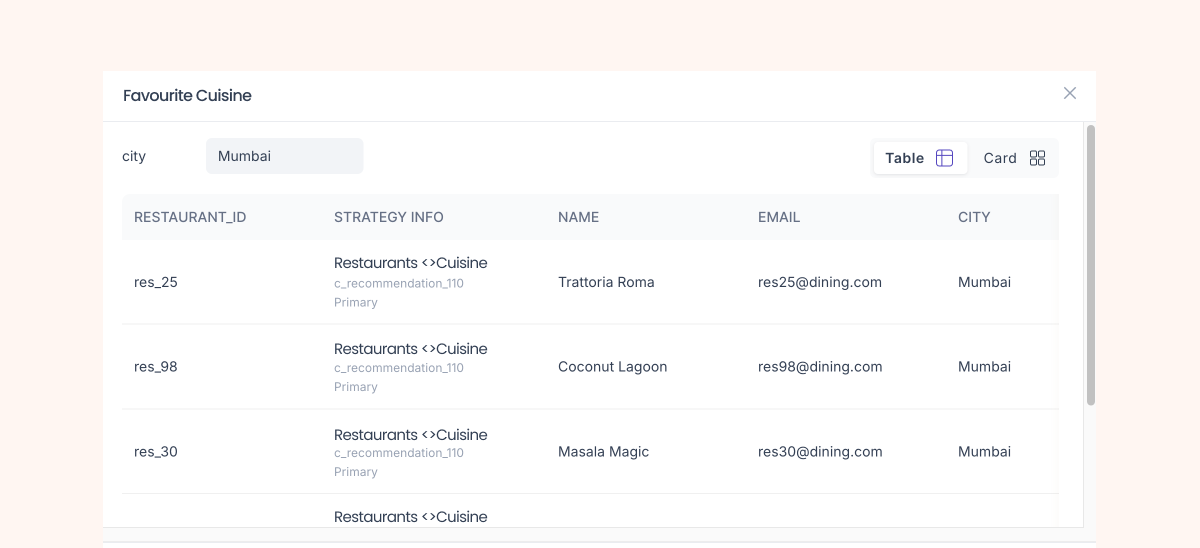
- Apply test values for dynamic personalization
- Inject campaign variables or real-time inputs to see how output changes with user-specific attributes.

- Customize the recommendation card layout
- You can choose which catalog fields appear and in what order (e.g., Restaurant name, image, cuisine, price for 2).
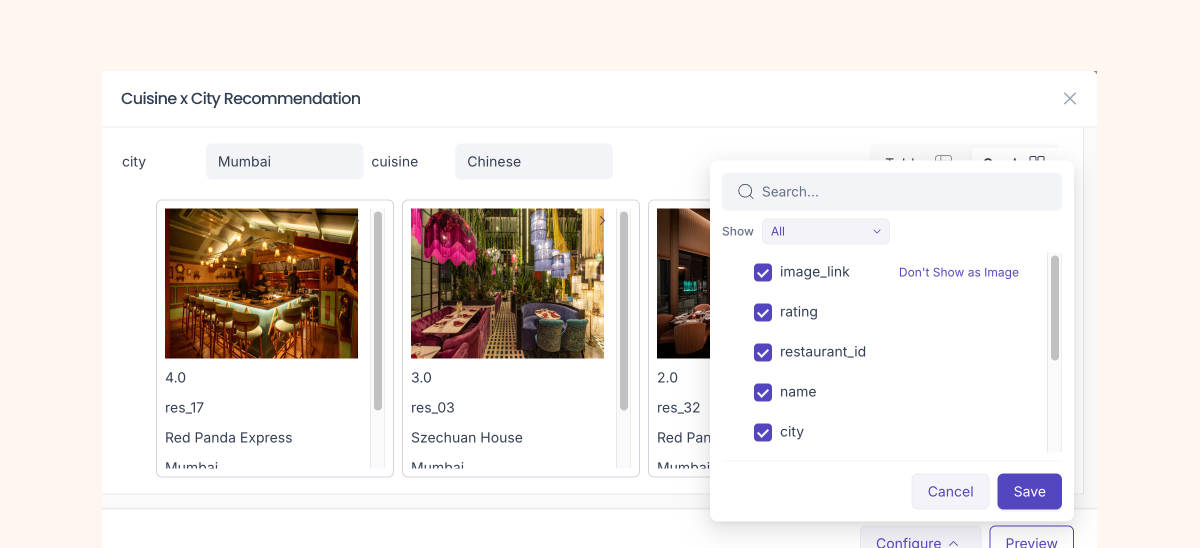
No guesswork. Just a live, interactive sandbox.
Use Cases by Industry
- E-commerce/D2C
Goal: Recommend fashion items tailored to the user’s preferences
Nesting Logic:
Brand = Preferred Brand (User Attribute)
AND Price ≤ Budget (Last Event Attribute/User Attribute)
OR Discount ≥ (Filter Within Campaign)
Example: A Zara shopper sees top-rated Zara fashion under ₹2000 or items on at least 20% discount.

- Travel & Hospitality
Goal: Suggest hotels matching the user’s amenity preferences and budget
Nesting Logic:
Amenities = Free Breakfast (Filter Within Campaign)
AND City = Searched Destination (Last Event)
AND Price ≤ Budget Type (User Attribute)
Example: A Goa traveler is recommended hotels under Rs. 5000 hotels with Free Breakfast and top reviews.

- EdTech
Goal: Recommend courses based on career track and past enrollments
Filters:
(Career Track = Declared Interest) AND (Category = Past Enrollments) AND (Discount Available = Yes)
Example: A Data Science learner is shown discounted Python and ML courses with high completion rates.

- Food Delivery
Goal: Show trending or personalized restaurant recommendations
Filters:
Cuisine = User’s Preferred Cuisine (User Attribute)
AND City = User’s Location (Last Event Attribute)
OR Rating ≥ 4.5
Example: A user in Mumbai preferring Chinese gets top-rated (4.5+) Chinese restaurants nearby.
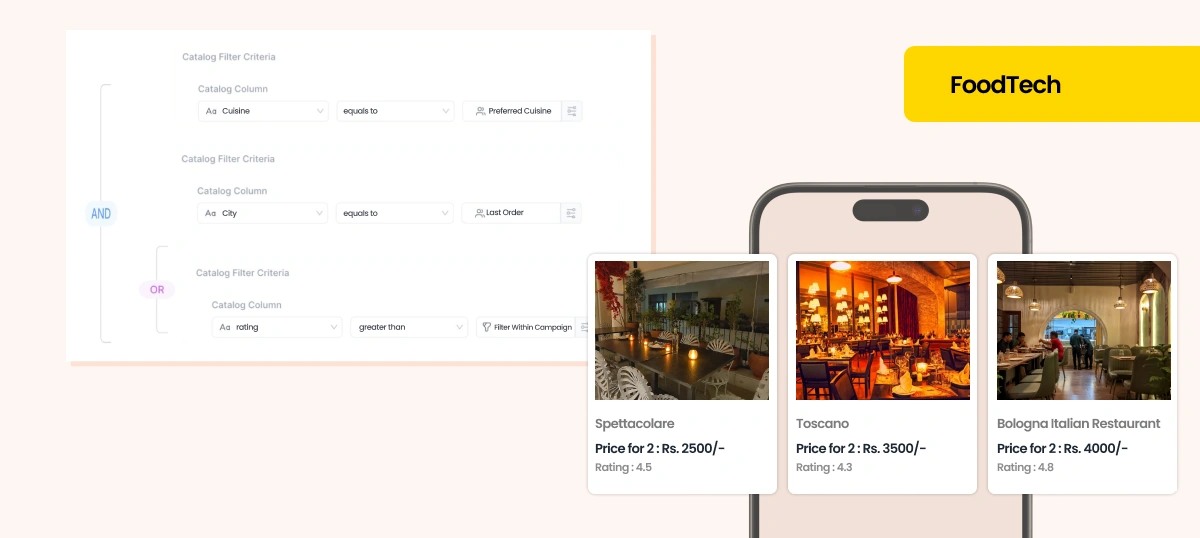
Wrapping Up
Collections gives you the power to move beyond generic recommendations and build strategies that mirror how real users behave. Whether it’s based on their location, preferences, or recent actions—you control what they see, how they see it, and why. To dive deeper into setting up your own Collections strategy, check out our Knowledge Base. If you have questions or feedback, feel free to write to us at product@webengage.com. Ready to build smarter, more contextual recommendations? Start exploring Collections today.





























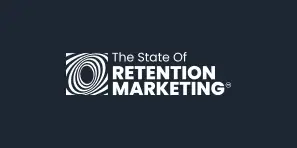
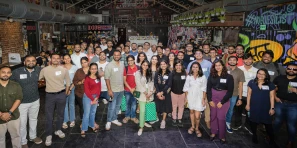
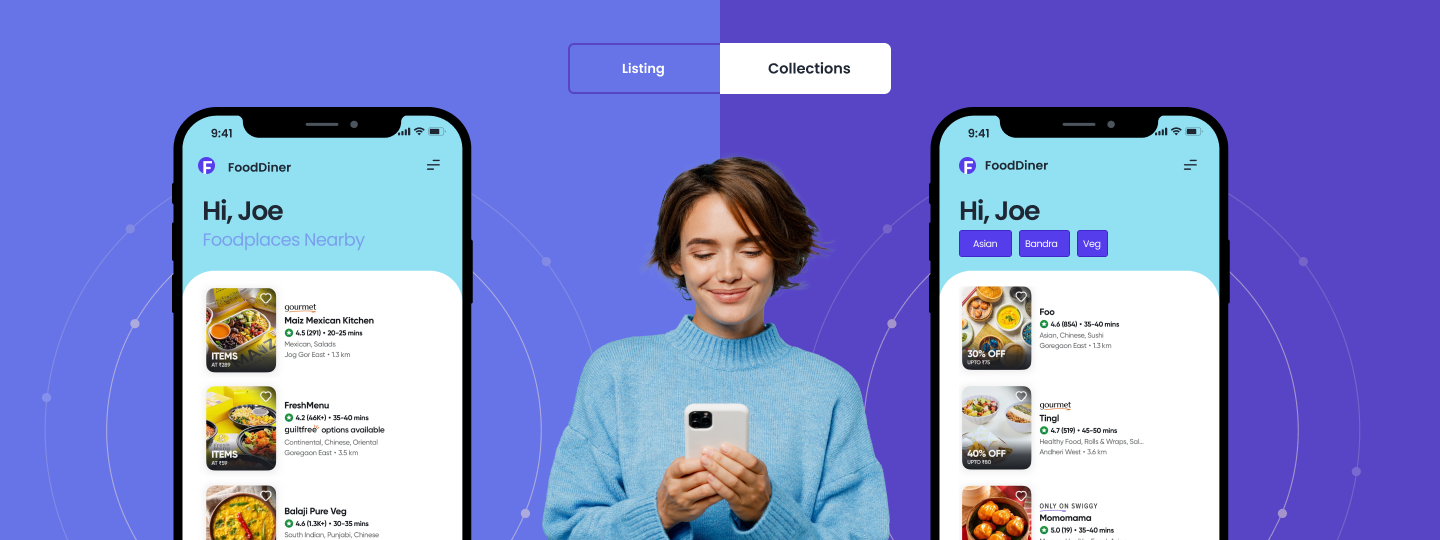

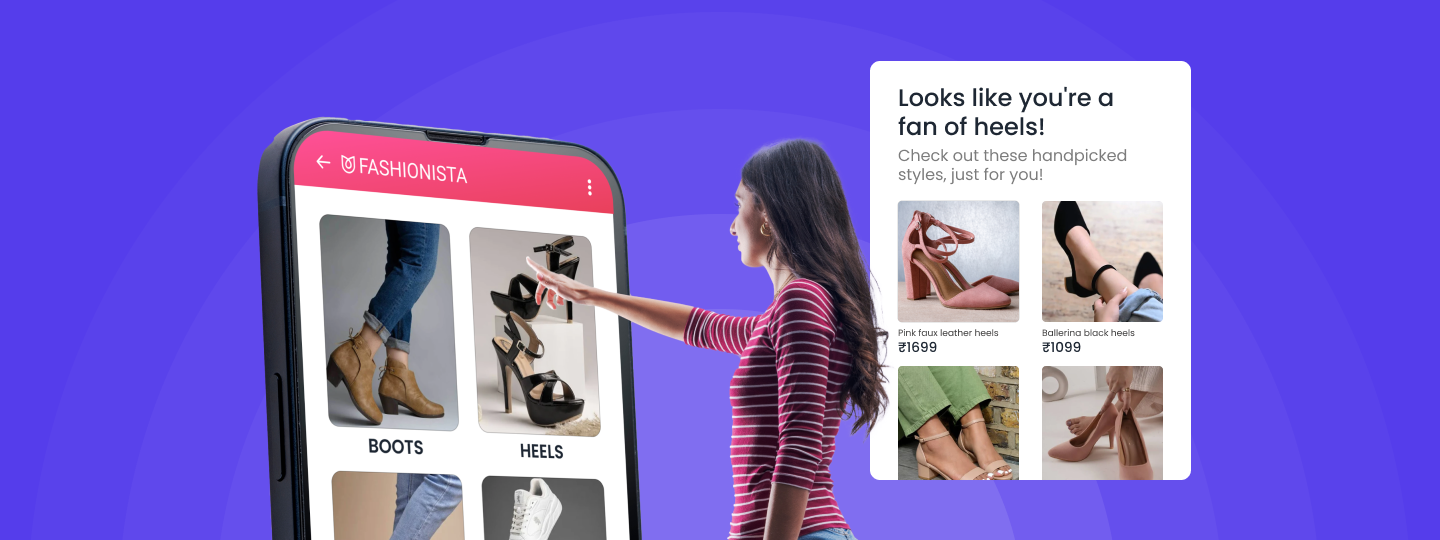
 Harshita Lal
Harshita Lal
